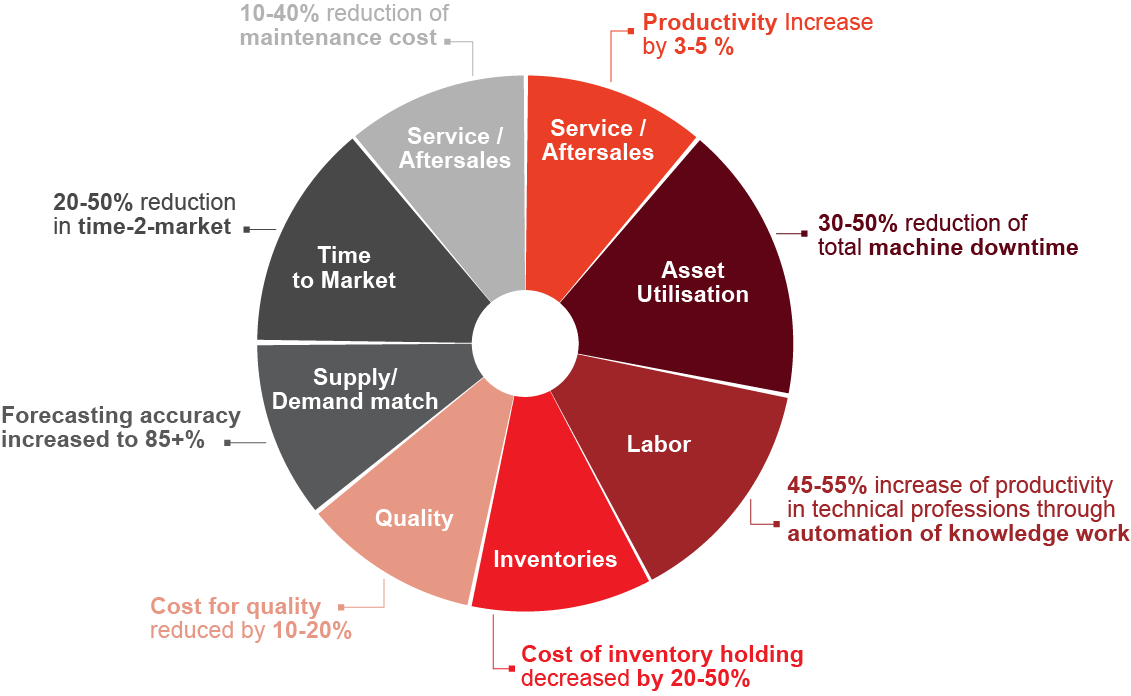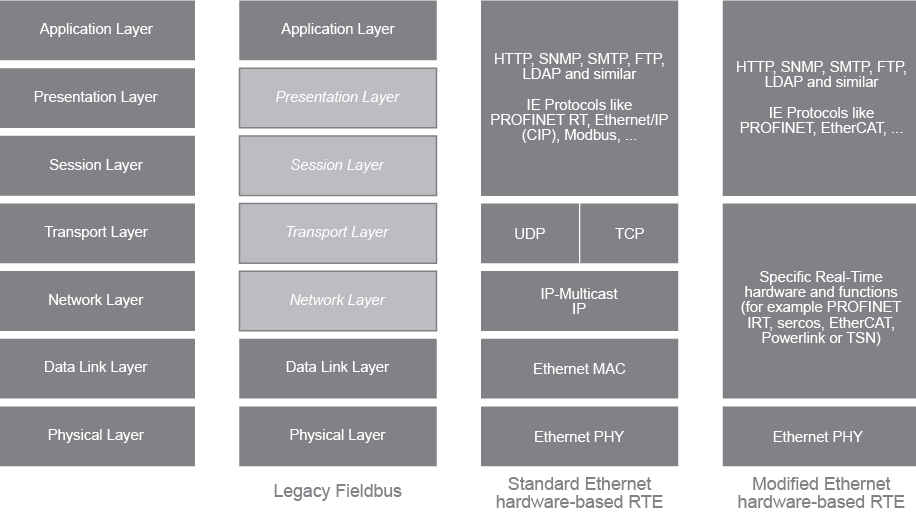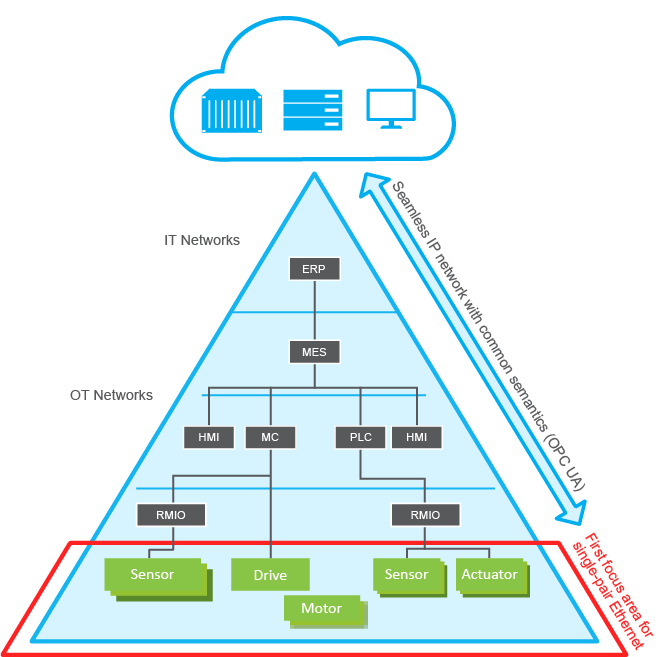Single-pair Ethernet, as a new initiative to enable IP based networks to each sensor, adds value through thinner cabling, small footprint plugs and connectors and less space requirements. For that reason, it is suitable to replace numerous existing fieldbuses in the sensor and peripheral area by integrating sensors directly to IT- and Cloudsystems.
Nothing has pushed the digitization more into the middle of our daily lives than radical changes to our comfort zones, as it has happened for example in the pandemic of Covid-19. All of a sudden, tools and methods that were partially in use in professional business matters such as video conferencing, online meetings and trainings became a part of our new normal. While this sudden increased demand in digital eco systems and services could be called a revolution, the digitization of the manufacturing industry took a much longer time to ramp-up. It has been in progress after several years of governmental activities, demonstrating the benefits in proof-of-concepts and moving standards forward. However, the desire of having a seamless sensor-to-cloud communication, as it is required for business models such as predictive maintenance and quality or smart robotics, still faces some gaps in the network infrastructure.
Single-pair Ethernet, as a new initiative to enable IP based networks to each sensor, adds value through thinner cabling, small footprint plugs and connectors and less space requirements. For that reason, it is suitable to replace numerous existing fieldbuses in the sensor and peripheral area by integrating sensors directly to IT- and Cloudsystems.
Hilscher expects an adoption in the process industry somewhere in 2021. Discrete industries are expected to follow later towards 2025, as the Ethernet infrastructure and specifically IO-Link solves already numerous challenges in digitization today.
From Hilscher perspective, there is no doubt, that SPE will be adopted and take market share in the longer run. Our netX family of network processors offer an opportunity to adopt to SPE infrastructure easily and build gateways from existing network infrastructure to SPE in order to enable a migration path.
This Blogseries discusses the status and progress of single-pair Ethernet from Hilscher’s point of view.





